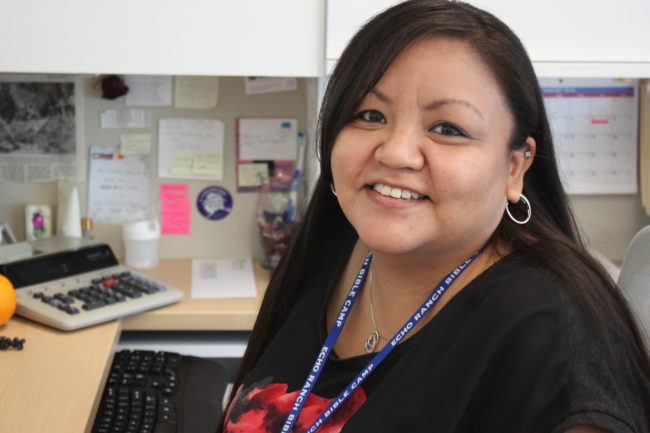
A Southeast health provider has adopted what may be the most progressive parental leave policy in Alaska. At least two experts say they don’t know of another employer in the state with a comparable benefit.
The Southeast Alaska Regional Health Consortium’s isn’t as far-reaching as Netflix’s new 1-year paid leave policy, but it may start a trend.
Ann Stepetin is due to deliver her fourth child in February. She and her husband had already decided she’d only take two weeks off from her payroll job at SEARHC.
“Because I didn’t think we could afford to be off any longer,” Stepetin says.
Then, she went into work one day and that plan drastically changed.
“You can see me getting emotional, I was like, ‘Oh my God.’ It was such a blessing,” she says.
SEARHC’s new parental leave policy lets Stepetin take eight paid weeks off instead of using her accrued leave.
“Having that in place does give me more of a relaxed feeling to prepare emotionally more or less for the baby rather than stressing about the finances,” Stepetin says.
And that’s exactly what SEARHC executives hoped the new policy would do.
“We want that family to be really focusing on the new child, the new addition to their family, and to not have to worry about any of the other issues,” says Peggy Kadlec, SEARHC’s interim head of human resources. “It’s an important time of bonding.”

SEARHC has about 650 employees in communities throughout Southeast Alaska; most are concentrated in Juneau and Sitka. Kadlec says the health organization wants its employees to have work-life balance.
“We believe our employees that are healthier, happier, will be here at work more frequently, provide the better kind of service into our community and at the end, (it) saves money,” Kadlec says.
She says people who take an active role in health and families have less health issues.
“If our employees are out less for medical reasons, our costs are reduced and we can transfer those dollars to programs to help them as well.”
Kadlec is excited about the new parental leave policy. So is Joy Lyon.
“Because that might pave the way for other organizations to see how successful that is,” says Lyon, executive director of the Association for the Education of Young Children in Southeast.
She says it’s critical for the time after childbirth to be as stress-free as possible.
“When you add the extra stress of trying to get back to work, find childcare, figure out your feeding schedule, that just adds such a layer of stress,” Lyon says. “Babies are little sponges for stress, so they’re going to be feeling that stress. Continuous stress inhibits the child’s ability to learn and grow so it has a really long-term impact.”
Ironically, AEYC does not offer paid parental leave to its employees.
The federal Family and Medical Leave Act requires most employers with 50 or more workers to guarantee up to 12 weeks of unpaid time off for a new child, among other reasons.
AEYC only has 10 employees, but follows these guidelines, like many other employers.
“Being a small nonprofit we just don’t have the ability to pay the extra the whole time,” Lyon says.
Most state and municipal employees are entitled to up to 18 weeks of unpaid leave for a new child. People who take family medical leave often use accrued time off to get paid.
Dan Robinson, head of research and analysis for the state Department of Labor, says the agency doesn’t have any research on paid parental leave in the state. That could change. The department has applied for a federal grant to look into it.
“It’s very possible that there will be state legislation, that a legislator will say we want to require employers to pay for parental leave, we want to make that paid. In that case, those questions could likely come our direction,” Robinson says.
At SEARHC, parents of new children can still access 12 weeks of Family Medical Leave after the eight weeks of paid parental leave. Ann Stepetin isn’t sure if she’ll dip into it.
“I haven’t thought that far yet. Eight weeks is a blessing compared to the two that I was planning on doing,” Stepetin says.
She says she’ll start with that and see how it goes.
